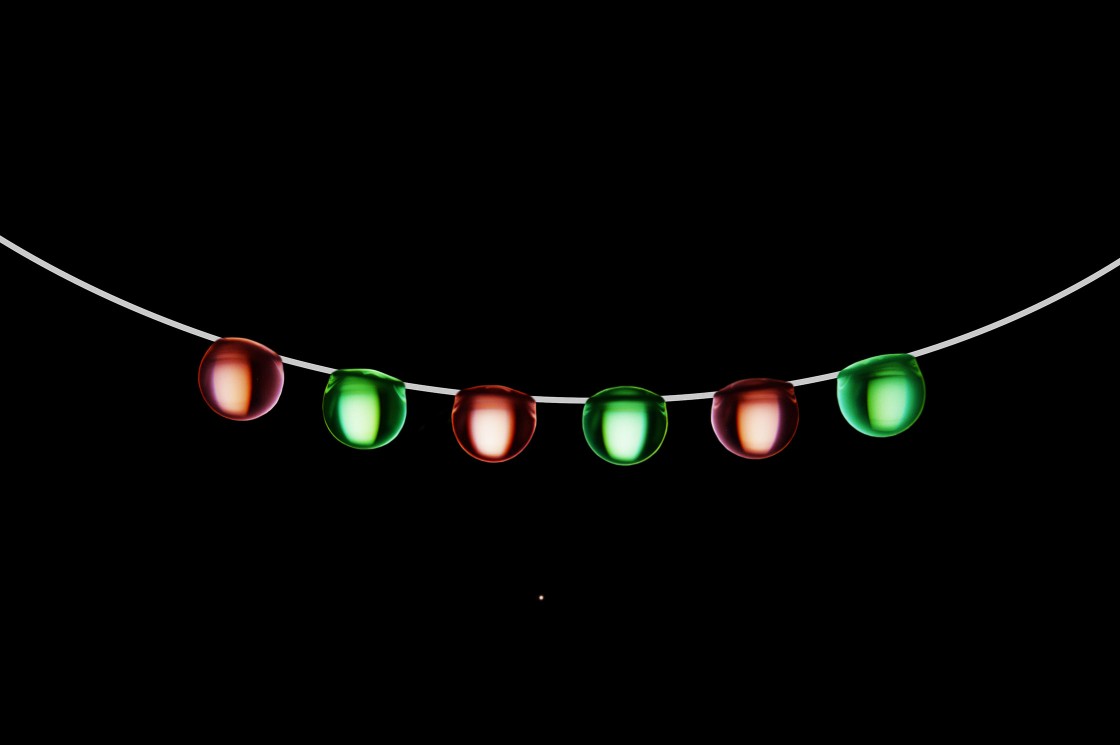This image looks like a festive, holiday-inspired necklace. But it’s actually colorful water droplets clinging to a wire. Because the wire is engineered to attract water, the droplets glide along the line, eventually merging into one another.
Led by Northwestern University’s Kyoo-Chul Kenneth Park, this new research is not just beautiful. It also could help optimize many environmental processes, including collecting fog from the atmosphere for drinking water.
When the water-attracting wire is inclined, the droplets propel themselves to zip along the line. But the surprise occurs when two water droplets slide into one another and coalesce. By joining together, the droplets’ speed increases by up to 270% more than before the coalescence.
By understanding droplet transport along a wire, Park says his team is closer to optimizing the ability to harvest fog from the atmosphere. As water scarcity becomes an increasing problem around the world, fog harvesters have emerged as an inexpensive and accessible way to collect drinkable water.
“The new phenomenon and mechanism about the sudden increase of droplet speed along a super-hydrophilic wire will benefit various fields,” said Park, an assistant professor of mechanical engineering at the McCormick School of Engineering. “This includes biomedical research requiring a fast transport of liquid, such as masks and filters, to protect people from airborne microplastics and droplets containing viruses.”
Brian Sandalow contributed to this article.


